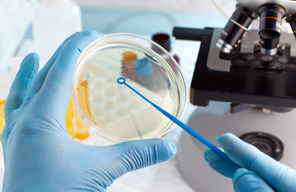 What is it?
A worldwide disease found in wild birds, pet birds and
poultry caused by the Chlamydia psittaci bacterium. The disease is particularly
common in tropical and subtropical regions. Outbreaks have been declining since
the 1970s as the world improves disease detection and response. There are
several different strains of the bacteria that can infect people or birds. Infections
can be respiratory, digestive or systematic and have been identified worldwide
in more than 460 avian species. Some birds carry it and aren’t affected, while
others can become sick or die. Among poultry, chickens appear to be slightly more
resistant to the disease. Infections have been reported in mammals.
How is it transmitted?
Either inhalation or fecal to oral ingestion through
discharged bacteria, which can remain active and infectious for several months
in bird litter. Direct transmission and
contaminated environments are the two primary sources of infection. Studies
have shown the bacteria can survive for up to 30 days in feces and bedding, and
the incubation period is between a few days and several weeks.
What are the clinical signs?
Discharge from the bird’s eyes or beak, green to yellow
droppings, fever, inactivity, ruffled feathers, weakness, and weight loss can
indicate avian chlamydiosis. Turkeys will most likely become anorexic, develop respiratory
distress or display a drop in egg production. The disease is best confirmed
by diagnostic testing, and samples should be sent to the
University of Minnesota's Veterinary Diagnostic
Laboratory in St. Paul.
What is the treatment?
There is no effective vaccine for birds. Antibiotics can be used in feed to treat
infected flocks.
Is there a risk to people?
Yes, people can be exposed to organisms shed from either live
or dead infected poultry. Inhalation and direct contact with infected tissues
are the primary risks, especially to those working directly with poultry or
handling pet birds. Wearing proper protective equipment and hand washing can
greatly reduce these risks. Please remember that infected birds and
contaminated material should be handled carefully. If contracted, the disease
is rarely fatal and can be treated with antibiotics. Flocks or individual birds without clinical signs are still a risk for infection. The Board works closely with the Minnesota Department of Health on this zoonotic disease.
Click here to read about an outbreak in 1986, when 186 suspect cases occurred in Minnesota turkey workers.
How can it be prevented?
Biosecurity helps prevent the introduction or spread of this
disease. Thorough cleaning and disinfection of buildings and equipment is very
effective as this organism is susceptible to heat and most disinfectants. Producers
should isolate new birds or birds returning to the flock from exhibitions or
fairs for a period of time. A well-kept building with functioning barriers to
separate wild birds also reduces risk.
|